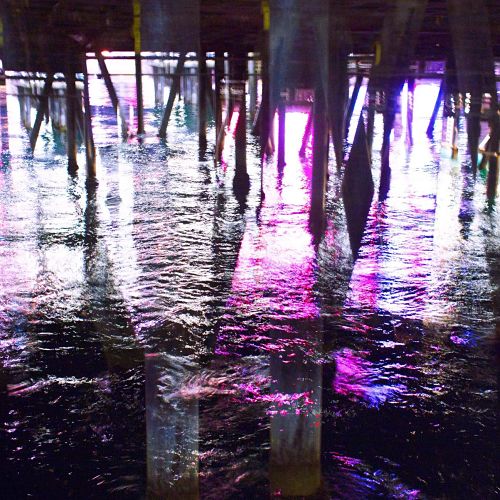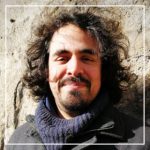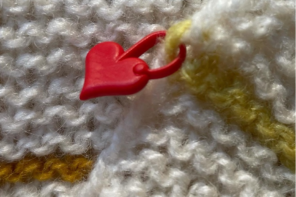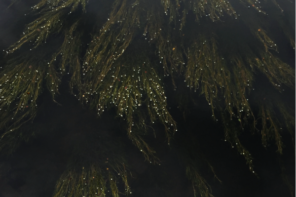Introduction
The theme of the Fluid mosaic offers an interdisciplinary journey, as Homi Bhabha would say (Bhabha 1994)[1] in-between different domains, such as visual art, dance, poetry, performance, songs, autoethnography, anthropology and biology.
This collaboration started with an abstract proposal in which the authors, most of whom were not familiar with the discipline of biology, were introduced to the theme. This proposal was left open so as to trigger various exchanges online, crossing the geographical borders that separated all the contributors, to encourage sharing across blurred and changing barriers: biological, social, racial, gender, environmental and political passing[2]-s (Ginsberg and al. 1996).
The authors and artists involved in this project come from different countries: Singapore (Wong Kwang Lin), Colombia (José Reyes), Trinidad and Tobago (Rodell Warner), Belize (Katie Numi Usher), Jamaica (Di-Andre Caprice Davis), Brazil-Portugal (Leticia Barreto), France (Ariane Benoit), Italy-Mozambique (Giulia Cavallo). The diversity of our national origins ensured the plurality of the research project. The process of forming the Fluid Mosaic in this way required the mediation of technologies, and the crossing of geographical time zones, as well as cultural and linguistic frontiers. The issues of living beings, movements, otherness, foreignness, migration, self-love, performance, spiritual journey among others emerged out of the various interpretations of the metaphor of the fluid mosaic.
Each interpretation of the biological theme mobilizes a different medium of expression.
The Fluid Mosaic wants to experiment with dialogism (Todorov 1981)[3] between academic subjects and artistic practices and methodologies. The Fluid mosaic is not just an object of research. It allowed all of us to metaphorically swim, dive and float on the fluidity of shared creative discourse that became like a meta-discourse among diversities. As a social and visual anthropologist, I am in charge of the curatorial process and theoretical communication between the artists and researchers who contributed to this thread. I see my role as a mediator, creating links between the domains of art, anthropology and philosophy. With some authors the communication was constant, and changed according to the debate that unfolded around the theme, with others the communication took the form of a digital dialogue. I wrote an introduction for each of the projects so as to provide the audience with some guidance when approaching the material presented in this thread. The scientific ties and pertinences between all the contributions and the theme have been revised by Jorge Ramírez, who holds a PhD in neurobiology.
What is a Fluid Mosaic?
In biology, the ‘fluid mosaic’ is a model that explains the paradoxical nature of the living cell’s membrane that acts as a porous and malleable barrier. The membrane represents a liminal border that is liquid, permeable, chaotic and unshaped, where mosaics form, deform and un-form. The mosaic is the assortment of functional ‘bridges’ embedded into this barrier that connect the exterior and interior parts of the cell. However, those bridges are neither fixed nor perpetual, they keep flowing inside the liquid border and eventually move outside of it. The bridges are not just crossed but they themselves traverse the membrane as well. While doing so, they create a disturbance, a crisscrossing changing phenomena in the membrane from which the mosaic and the cell are transformed. This act of passing is excessive and ephemeral. It implies an ever-changing state of the boundary of the cell that, in turn, mutates its identity.
Framing the fluid mosaic in this project, the “cells” can be interpreted as fluid and changeable entities or subjects that outline complex but not limited notions of liquidity (Bachelard 1942)[4], oceanic relations (Romain 1927)[5] of powers and pluriversality (Mignolo 2011)[6]. The fluid mosaic in the cells’ membrane is constituted by three stages, similar to the stages of a rite of passage, as described by the ethnographer Arnold Van Gennep (1909)[7]: separation, incorporation and liminality. In biology, the stages are: the interior of the cells, the exterior and the membrane that is located in between the previous two. The elements pass through the membrane in order to gather nutrients, to dispose debris and to pass information.
The project
This project has been an exercise of trans-lation, not just in linguistic terms, but in terms of finding creative registers and subjective resonances, as well as narrowing the gaps between debates, feelings, experiences and scientific researches which could be perceived at first sight as situated on the antipodes of each other. Trans-lation from -trans (“across”) and -latio (“carrying”), is a leitmotiv for this collective experiment made of entanglements, expertise and creations gathered together around the theme of the Fluid Mosaic.
The Fluid Mosaic project enabled us to play with the notion of the Laboratory, beyond the historical imaginary of an indoor building, questioning existential, creative and social laboratories that are in permanent contact with human lives.
It is a hymn to hybridity and ‘mongrels’, a struggle to find a sustainable, understandable common language that goes beyond institutional barriers, historical disciplinary constructions and imposed by academic status quo.
We made the most out of the porosity that characterizes the digital platform so as to push the limits of the medium’s creative power.
[1] Homi, Bhabha. 1994. The Location of Culture, London: Routledge.
[2] The term passing (Ginsberg 1996) in sociology refers to the ability of a person to be regarded as a member of an identity group or category different from their own, which may include racial identity, ethnicity, caste, social class, sexual orientation, gender, religion, age and/or disability status. Elaine K. Ginsberg, Donald E. Pease. 1996. Passing and the Fictions of Identity. Durham: Duke University Press.
[3] Tzvetan, Todorov. 1981. Mikhaïl Bakhtine. Le principe dialogique. Paris: Seuil.
[4] The term liquidity can evoke shapeless, changeability. Liquid is a transitory element, ontologically metamorphic, it exists as a being in flux.
Gaston, Bachelard. [1942]1983, Water and Dreams: An essay on the imagination of matter, trans. E.R. Farrell, The Dallas Institute of Humanities and Culture, Dallas.
[5] The “oceanic feeling” invoked by Rolland Romain (1927) evokes the feeling of limitless, and unbound.
[6] Pluriversality refers to a world entangled through and by the colonial matrix of power; it pinpoints the action of dwelling with borders and in the borders, as a decolonial practice.
Walter, Mignolo, 2011. The Darker Side of Western Modernity. Durham: Duke University Press
[7] Van Gennep, Arnold. 1909. Les rites de passage. Paris: Émile Nourry
Feature Image (cropped) by Maica Gugolati










